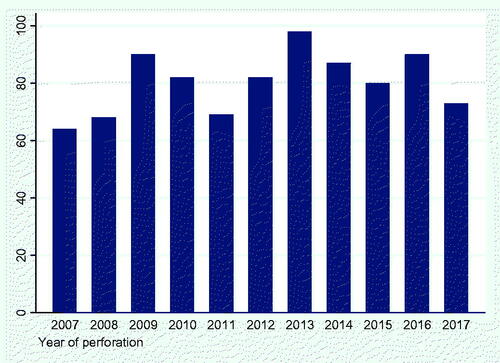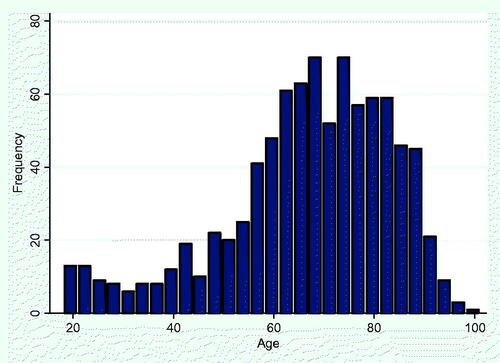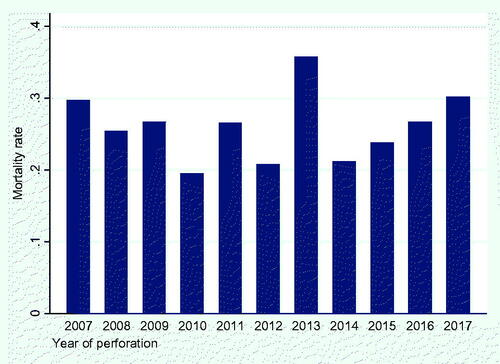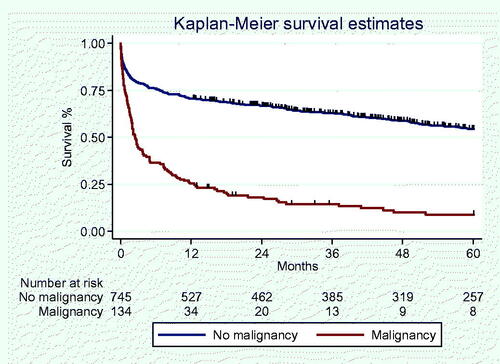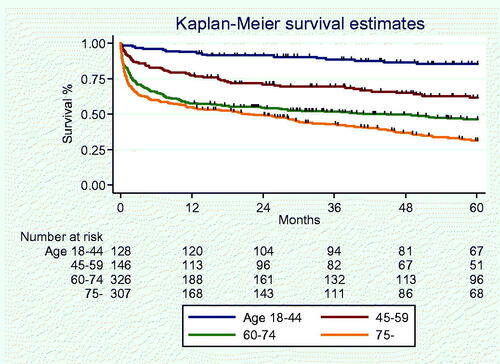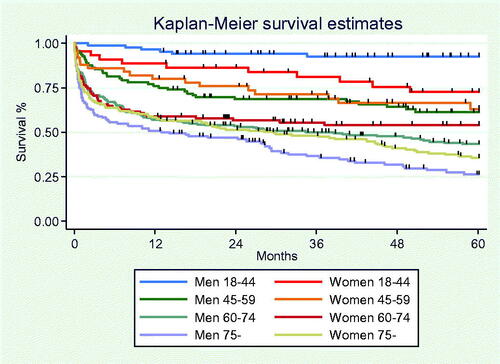Figures & data
Table 1. Baseline characteristics of 879 patients diagnosed with esophageal perforation in Sweden between 2007 and 2017.
Table 2. Treatment characteristics of 879 patients diagnosed with esophageal perforation in Sweden between 2007 and 2017.
Table 3. Odds ratios (OR) with 95% confidence limits (CI) from logistic regression for the outcome death from any cause within 90 days from diagnosis of perforation.

